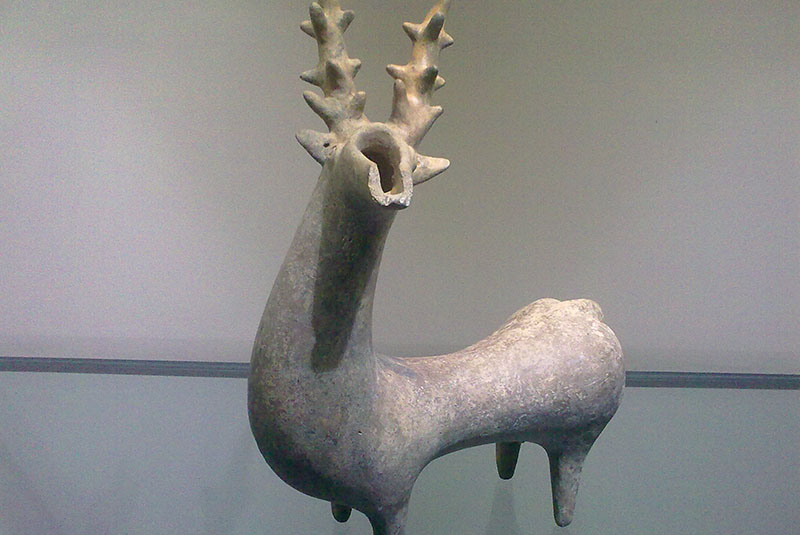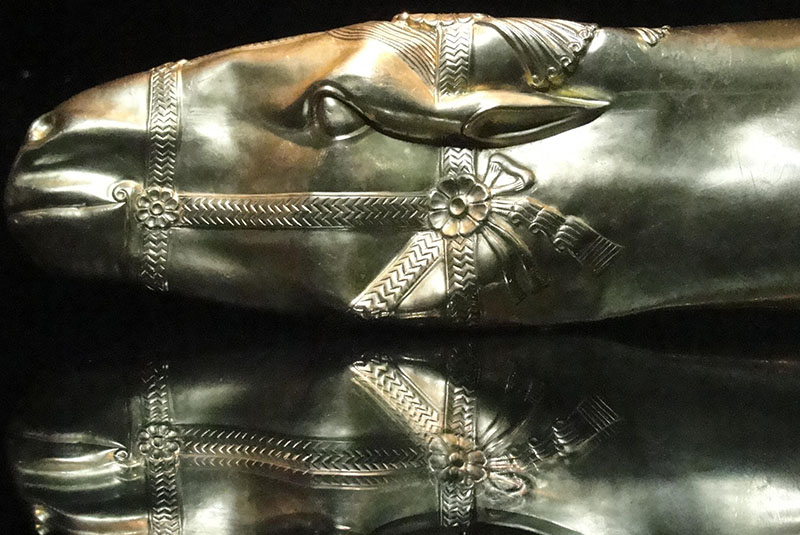Reza Abbasi Museum; The Little National Museum of Iran
Tehran as the capital city of the country is home to a number of museums.
Among all of them is the Reza Abbasi Museum which is well-known for its magnificent collection. Having a number of items from different periods, from the second millennium BC till the middle of the 20th century, makes Reza Abbasi Museum one of the most magnificent and richest historical museums in Iran. It is sometimes called “the little national museum of Iran”.
All the items are exhibited in chronological order in three stories. The pre-Islamic items are on the third floor, Islamic Arts on the second floor, and finally painting pieces (Negar Gari), calligraphy, and temporary display on the first floor. This type of exhibition makes it possible for you to understand the evolution of Persian art throughout the museum. So it is highly recommended to start your visit to the museum on the third floor.
History of Reza Abbasi Museum

Initially, in September 1977, the Reza Abbasi Museum was opened under the order of Queen Farah Pahlavi and was named after a prominent Iranian painter who was born in Kashan. Due to the changes in its internal decorations and further expansion of its exhibition space, it was closed a year later. During the next eight years, it was opened and closed many times following the obstacles. Finally, in the year 2000, it was opened under the management of the Iranian Cultural Heritage Organization.
| Find related articles here: Persian Art
The collection at Reza Abbasi Museum
It is said that more than fifty thousand items are stored at the museum, but only 700 of them are exhibited randomly. The items that are collected in this museum belong to different periods from the 2nd millennium BC to the early 20th century which is the same time as the end of the Qajar period. However, the museum is famous, particularly for its Islamic section.
The Reza Abbasi Museum is unique in the arrangement of its items since they are arranged chronologically, so visitors can have a chance to observe the development of art, culture, and technology during this time interval. The objects exhibited in this museum include artifacts made of baked clay, metal, and stone from pre-historic times to pottery and metal objects, and textile and lacquer paintings belonging to the Islamic period. Other artworks on display in the RAM are paintings on canvas and paper, manuscripts, and jewelry from the pre-Islamic period, besides art and technology and calligraphy works of the Islamic period.
| Related: Best Museums in Tehran

One of the most famous items at the museum is the oldest copy of the Great Mongol Shahnameh by Ferdowsi. In addition, there is the best collection of bronze works in the world. Bronzes from Lorestan are spectacular due to their modern usage at the time of their production. There are a number of items in this series at the Louvre Museum, but still, you will find some interesting examples of these artifacts in the pre-Islamic part of the museum.
Library of Reza Abbasi Museum
There is a library with more than 10,000 Persian, English, French, and German books which is open to the museum curators, the staff of the Cultural Heritage Organization, university students, and researchers. Most of the books have a subject in history art, archaeology, and classical paintings of Iran. In addition, there are also 50 different Persian and 60 foreign magazines, and 90 different newspapers at the library. There is no book loan service at the library.
| Discover: Top 23 Museums in Iran + Photos
Conservation Department in Reza Abbasi Museum
With two laboratories and workshops for the conservation of paintings, metal items, and manuscript books, the Conservation Department has been considered one of the most advanced conservation workshops in the country.
Publication Department of Reza Abbasi Museum
The Publication Department has published valuable references on the Iranian artistic legacy. The following titles are available online at www.chf-iran.com.
1- The Art of the Achaeminians,
2- Lorestan Brass and Metal Objects from the Islamic Period.
3- A Collection of Iranian Arts, from the 2nd Millennium to 6th Century BC.
4- A Collection of Iranian Miniature and Calligraphy, from the 8th to late 12th Century AH.
5- An Introduction to the Art of Iranian Tilework.
6- Architecture of Esfahan Jamè Mosque.
7- Clay Tablets of Neishabour.
8- Tea-house Painting.
Address and Opening hours:
- Address: Number 972, at the crossroad of Shariati Street and Seyedkhandan Bridge, Shariati Street, Tehran
- Phone: (+98 21) 8851 3002
- Visiting days and hours: Every day except Mondays, 09:00 – 17:00
- Closed on Mondays and Public Holidays


Comment
Leave a Comment